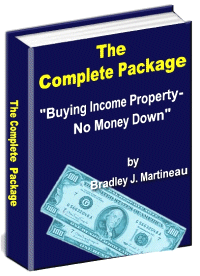We are dealing with deferring taxes so we have to be very careful to follow all of the IRS rules governing 1031 Exchanges or we could be in for some stiff penalties!
Rule #1
You MUST use a Qualified Intermediary!
You are not allowed to handle a 1031 Exchange on your own. You will need to find what’s called a Qualified Intermediary (QI) to help you with the process. According to the IRS, the following people are prohibited from being your Qualified Intermediary:
• Parent
• Children
• Siblings
• Any “Agent” (unless he or she hasn’t represented you in the last 2 years) such as:
o Your Attorney
o Your Broker
o Your CPA
o Your Real Estate Agent
There are several professional companies, such as some title companies, that offer their services as Qualified Intermediaries. Please be careful when selection a QI. Because there are very few rules stating who can become a QI, you want to make sure that you are dealing with a reputable, trustworthy company that is experienced in 1031 Exchange.
Rule #2
You MUST start the 1031 Exchange process Before selling your current investment property!
When you list your current investment property, you should state in your listing agreement that this sale will be part of a 1031 Exchange. This shows your intent. Make sure, before you list your property with a realtor, that he or she understands what a 1031 Exchange is. Although the relator is not responsible for making sure that you follow the guidelines, it is very helpful if you have an extra set of eyes helping you complete the transaction.
A seasoned realtor will be able to explain to other agents and buyers that this will not affect them at all. You wouldn’t want a buyer to think that you were doing something to complicate the process – it really doesn’t change anything for them.
You will also need to have your Qualified Intermediary identified and state that you are listing the property and follow all of his or her instructions.
If you have already sold you property, it is too late to put it into the 1031 Exchange! Your QI will help facilitate everything that is needed for the sale by coordinating with the closer of the transaction and providing the necessary documentation.
The QI will create an arm’s-length transaction and create an agreement between the two of you. This agreement will transfer the investment property to the QI, who then will convey it to the new buyer. After the sale, your previous investment property will be referred to as the Relinquished Property.
Rule #3
You CANNOT take possession of the funds!
Once your investment property closes, you are not allowed to receive the funds from the sale of the relinquished property! If you take actual or constructive receipt of the funds, you put the 1031 exchange in jeopardy. Remember to always be careful and watch every step that you take!
The QI shall receive the funds and should invest them into a separate, insured account. Hopefully the account is also an interest bearing account. The interest income will cause a 1099-INT to be generated, and you will have to pay income taxes on that amount.
Rule #4
Time is the essence! You MUST identify a new property within 45 days!
One of the caveats of the 1031 Exchange is that you have a defined timeline within which to identify and purchase a replacement investment property.
• Identification Period: You have exactly 45 days from the time you close on your relinquished property to identify your replacement properties. Regardless of weekends or holidays, you MUST have the replacement property or properties identified and submitted to your QI by the 45th day. There are NO extensions!
If you name your properties and they all sell before you are able to purchase them … and your 45 days up … you are out of luck … and into a nasty tax situation! All of your work will be for naught!
With that being said, strategically it would be wise to wait as long as possible (without going over) to identify your potential properties! However, Do NOT MISS this DEADLINE!
You will have a Grand Total of 180 days within which to complete the entire new purchase.


